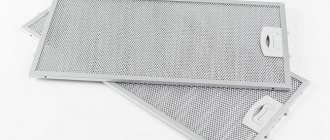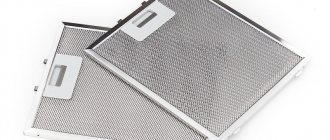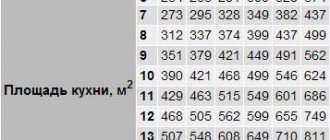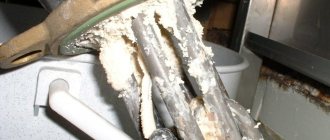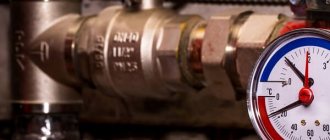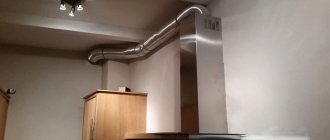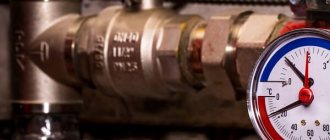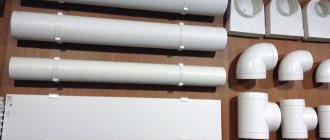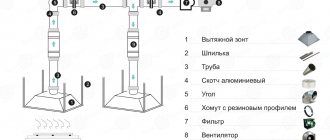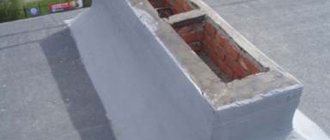The kitchen is the place where a significant part of the life of any housewife, as well as all household members, takes place. It is the one that is always furnished in the most comfortable and cozy way, because both preparing food and eating it should bring pleasure and convenience. An important household device in any kitchen is the hood, which is responsible for the cleanliness and freshness of kitchen aromas. This is a guarantee of the health of the cook and a way to remove culinary odors from the premises.
Hoods come in different sizes, operating modes, air removal methods, filters used and control methods. The most fundamental criteria when choosing a hood are the types of structures, methods of air removal and the filters used. The effectiveness of performing assigned functions depends on this. Filters for kitchen hoods are the topic of this article.
Hoods by type of design
- Hanging.
Placed directly above the hob, it is equipped with filters that absorb small particles and fat that rises with the steam. Suspended models with outlets into the ventilation ducts using a corrugated hose work more efficiently.
Compactness (suitable for even the smallest kitchen) and affordable cost have made this design popular.
- Built-in.
It is completely hidden in the closet and does not stand out against the background of the kitchen set as a separate element. Functionality may vary depending on cost and additional features.
- Dome.
It involves connection to the ventilation system, and therefore is considered the most powerful and is suitable for large kitchens.
- Corner.
An interior option when a hob with corner placement is provided.
- Island or T-shaped.
Typically for larger kitchen complexes where a ceiling mounting structure may be required. These are the most powerful models that perfectly eliminate odors.
Purpose of filters
Devices that collect air on the stove are powered by an electrical network. They can be divided into two main types:
- Air venting. A special feature of the design is the presence of a sleeve; it is built into the air exhaust shaft or goes outside the room. With the help of a motor, air is drawn in and removed. This design is quite difficult to install and is located directly above the hob.
- Recirculation. This kitchen device does not have an air duct. The principle of its operation is to draw in air, purify it and release it back into the home. The devices are much easier to install than air exhaust devices and can be installed anywhere in the room, regardless of the location of the shaft. In addition, recirculation units provide a supply of fresh air.
Grease hoods are usually installed directly above the hob; they draw in fumes that form during cooking, as well as grease splashes. If the device does not have this element, then impurities will enter the engine, thereby leading to its breakdown. Air exhaust devices are installed in shafts, and the drawn air rises to the top. Without a filter, odors will not be retained, so people living on the floors above will suffer.
In recirculating devices, the grease filter for the hood still protects the motor, but it also ensures maximum cleaning of the air flow back into the kitchen. From all of the above, we can conclude that cleaning systems play two important roles at once:
- Protection of the motor from contamination.
- Ensuring a comfortable indoor climate in residential premises.
Filters used in kitchen hoods
Modern hoods are equipped with two types of filters: grease and carbon.
Types of grease filters
They involve rough cleaning of the incoming air from soot, small unburned particles, as well as fat (which is why they are also called grease traps). Such filters are available in hoods of any type and operating mode. This is a kind of barrier against penetration into the depths of the device by significant air inclusions that can clog the engine and disable it.
- Single use . They can be made of paper, non-woven fabric or padding polyester. They are thin mat pads that can be adjusted to the required size if necessary. Used in cheaper versions of suspended and built-in models. The degree of contamination and the need for replacement can be easily determined visually and by special technical features described in the operating instructions.
Pros:
- No maintenance required;
- Easy to install;
- They are inexpensive.
Minuses:
- Needs frequent replacement.
- Reusable acrylic filters. Like the previous ones, they have the appearance of a mat-backing and require delicate “washing” in warm soapy water once a month. This is a conditionally reusable device, because after each such cleaning, their effectiveness in trapping fat decreases.
Pros:
- You can clean it for a while without buying a new one;
- Easy to install and replace.
Minuses:
- After each “wash”, efficiency decreases.
- Frame grease filters. The material for their manufacture can be aluminum, stainless steel or foil. As a rule, such filters are used throughout the operation of the exhaust unit and are suitable for a specific model. They are the most effective of the grease filtration systems. They require regular maintenance - mechanical cleaning of grease deposits that form during the absorption of purified air.
Pros:
- Reusable, used throughout the life of the hood and does not require replacement;
- They can be removed/installed without much effort if you follow the instructions in the instructions.
Minuses:
- The cleaning process requires effort and special fat-dissolving agents.
The grease filter is the main protection of the internal device of the hood; the long-term operation of the engine and the further ability of the air-purifying properties depend on its condition.
Types of carbon filters
Carbon filters (also called fine filters) clean the air from odors, harmful gas and steam impurities. Their installation location is always behind the grease filter. The basis or filler for fine cleaning is activated carbon (in the form of powder or granules), hence the name “charcoal”, which does an excellent job of absorbing unpleasant odors. If the ventilation system in the kitchen leaves much to be desired, a carbon filter will effectively and quickly eliminate unpleasant special effects.
The shape and type of such a filter depends on the type of hood; it can be a flat rectangular cassette, a round convex shape or a flat cartridge, etc. The body part is most often made of plastic with a mesh side, behind which there is a carbon filler.
All fine filters are disposable, have different service lives and need to be changed regularly. Modern models of hoods have a sound or light indication system, which signals that it is time to replace the cassette or cartridge. Thanks to the simple installation method, changing does not cause any additional difficulties.
Since filtration is the main function of the hood, the condition of the filters must be monitored carefully. This guarantees high-quality air purification and long service life of the device.
Disposable filters
Disposable grease filter
Filters in kitchen hoods can be disposable or reusable. It is clear that the second type is of higher quality, but the first is also quite common.
Some synthetic materials are used to make disposable cleaning devices:
- padding polyester;
- interlining;
- acrylic and some others.
In appearance, such grease filters resemble a small thin rug. They are usually used in budget models of hanging hoods installed on kitchen cabinets. They are called flat.
Synthetic filters should be replaced as they become dirty. Some housewives even manage to wash such devices by reusing them. It is not recommended to do this, since it will not be possible to return the initial cleaning properties of synthetics, and with each subsequent use, air purification with the filter will be less effective.
The best universal disposable grease filters for kitchen hoods
Grease filters can be specially designed for a specific hood from a certain manufacturer, or they can be universal, with the ability to adjust the size to fit any unit. Below is a rating of the best universal disposable coarse filters.
Electrolux E3CGA151
Made from white polyester. Product dimensions: width (cm) - 114, length (cm) - 47, thickness (cm) - 2 (increased for greater efficiency in fat absorption), weight - 500 g. You can easily adjust the desired size by cutting off excess. Requires regular replacement after 3-4 months, depending on the intensity of use of the hood.
Cost: 650 rub. (on the manufacturer’s website 314 rub.)
Electrolux E3CGA151
Advantages:
- Versatility (you can cut it yourself to the desired size), suitable for any hood;
- The thickness has been increased, which allows for more effective absorption of fatty fumes and longer use (3-4 months).
Flaws:
- Relatively high price, although the service life fully justifies it.
Electrolux E3CGB001 Grease Filter
The standard size from the manufacturer is 114*47 cm. The material of manufacture is natural fiber fabric, which can be easily further processed (does not require special disposal). By simply cutting, you can adjust the filter to the required size.
For convenience and so as not to miss the replacement time, the manufacturer has provided a visual indicator signaling that it is time to install a new filter: when the color of the logo changes to bright red, you should react immediately.
Cost: 450 rub.
Electrolux E3CGB001 Grease Filter
Advantages:
- Simplicity and versatility in size;
- Natural fibers are used that do not emit any harmful substances around them;
- Long time of use;
- No need to resort to special disposal;
- There is an indicator that will tell you when the product will go out of service.
Flaws:
- Price;
- The need for regular replacement.
Topper FV1
Country of origin: Germany. The set includes 2 filters measuring 47x55 centimeters, that is, they are perfect for any hoods 50-60 centimeters wide. The presence of a Topperr indicator (a paper backing with logos) will tell you when you need to change the filter: the gray color of the picture will change to red.
Cost: 399 rub.
Topper FV1
Advantages:
- Contains 100% biodegradable material that does not harm health or the environment;
- Includes 2 filters;
- Ability to independently adjust the size;
- There is a hint indicator for timely replacement.
Flaws:
- Requires relatively frequent replacement.
Top House TH F 130i
Production - Germany. Contents: 2 pcs. Dimensions: 57 cm * 47 cm. Made from natural fireproof material. Suitable for any hoods with a width of no more than 50-60 cm. A visual indicator is provided to notify you of the need for replacement.
Cost: 261 rub.
Top House TH F 130i
Advantages:
- The instructions do not specify a specific hood model; it is suitable for any hood whose width is no more than 60 cm;
- Supplied with 2 filters per package;
- Made from non-flammable material at high temperatures;
- There is an indicator to notify you of a change to a new one.
Flaws:
- The average service life is no more than 2 months.
The best universal carbon filters for kitchen hoods
They are inserts with carbon impregnation, the dimensions of which can be adjusted independently to the required dimensions of the hood.
Filtero FTR 02
The kit consists of a carbon insert and an additional grease filter. Size – 57 by 47 cm, suitable for any hood with dimensions up to 60 cm. Unlike its own kind, it is thicker, which guarantees a long service life. Indicators on the grease filter will help you not to miss the replacement time.
Cost: 560 rub.
Filtero FTR 02
Advantages:
- Fiber density and good liner thickness;
- Can be used for 4 months;
- Affordability.
Flaws:
- It may become dusty during installation and crumble after cutting.
Zumman FV 1
Flexible cellulose fiber filter impregnated with carbon impregnation. The kit includes an additional grease catcher with an indicator. Can be used in any exhaust unit not exceeding the size of the liner (that is, up to 60 cm).
Cost: 450 rub.
Zumman FV 1
Advantages:
- It has the ability to absorb smoke well when frying on the stove;
- Completely biodegradable and does not require special disposal;
- A significant advantage is the existing indicator that controls the replacement period;
- Affordability.
Flaws:
- Requires regular replacement;
- Doesn't always do a good job of removing odors from the air.
Elikor 5334009
Material: polyester fibers. Size 57*47. Ease of use, affordable price and a well-known manufacturer are an excellent combination for the popularity of the product. It is enough to cut the required size along the frame of the grease filter and place it in the appropriate place behind the coarse filter.
Cost: 390 rub.
Elikor 5334009
Advantages:
- The versatility of the model allows use in any hood;
- Can be used for other purposes: for example, car climate systems;
- Affordable price combined with quality.
Flaws:
- Impregnating carbon filters require frequent replacement.
Reusable filters
Reusable metal filter
Reusable grease filters for hoods are used throughout the life of this household appliance. Such cleaning devices are installed in devices of medium and high price categories.
This type of filter is made of metal and is more durable and reliable in operation compared to disposable models. There is no need to replace them at all, but it is important to periodically remove the filter and clean it.
Reusable filters are usually made of aluminum and resemble a cassette in appearance. Structurally, it consists of a metal frame and a filter element, which uses many layers of foil - perforated or mesh. In this case, perforation can be asymmetric or symmetrical.
The filter allows air flows to pass through it freely, but fat particles settle on its surface. Reusable cleaning elements are most often made of aluminum foil or mesh, but sometimes galvanized steel or stainless steel models are also available.
But you can often find cleaning elements made from some other materials. For example, Elica brand products are often made from anodized aluminum. The surface of such a material is a very thin layer of metal that prevents oxidation.
Products from the manufacturer Elikor perfectly capture grease particles contained in the air in the kitchen after cooking food there thanks to a five-layer filter made of the same type of aluminum. Despite such a large number of layers, air flows pass through the element as freely as possible.
Devices of the middle and high price categories are in most cases equipped with not one large, but 2-3 small cassettes, which makes it easy and quick to remove them, wash them and put them back in place.
Cassette fine carbon filters for kitchen hoods
Zeman TCF-025
Initially, this cassette-type carbon filter was intended for hoods from Elikor. It fits perfectly for more than 15 models. The universality of the shape (diameter 200 mm) allows use in devices from other manufacturers, for example, Cata and JetAir.
The case is made of strong heat-resistant plastic. Inside there are large coal granules that successfully purify the incoming air. The average service life of such a filter is about six months.
Cost: 260 rub.
Zeman TCF-025
Advantages:
- Does not have any effect on the performance of the hood;
- Made of reliable material with good heat resistance;
- Affordable price;
- Versatility of use in different models of hoods.
Flaws:
- Single-piece sales (1 piece included), although the list of units that can be used includes twin-engine ones.
Krona KU
Made in China. The original purpose is Crohn's hoods. The diameter of the durable plastic cassette is 160 mm. The filler is medium-sized coal granules. Used in more than 7 series of Krona exhaust units.
The universal round shape and diameter allow it to be used in models from other manufacturers, including those with two engines.
Cost of a set of 2 pcs. about 1600 rub.
Krona KU filter
Advantages:
- In recirculating hoods, it cleans the air well from odors;
- Also used for ventilation models;
- Suitable for other manufacturers;
- Muffles engine noise;
- Easy installation and strong fixation.
Flaws:
- Comes with 2 pieces, so the cost is high.
Eventually
Grease filters for hoods are practical products that effectively clean the air of grease and other impurities. Each type has its pros and cons. The maximum result is achieved by choosing the right grease trap. When making a purchase, you need to choose the right size and material.
Also, do not forget about timely sanitary and hygienic treatment, because otherwise, a dirty filter will reduce the cleaning efficiency to a minimum. To remove severe contamination, modern, fairly strong products are available for sale that will remove grease deposits from the grate in a matter of minutes and without much effort.
